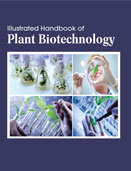Handbooks

This book introduces the foundations for plant biotechnology by outlining the biological aspects including gene structure and expression, and the basic procedures in plant biotechnology of genomics, metabolomics, and transcriptomics. The roots of plant biotechnology can be traced back to the time when humans started collecting seeds from their favorite wild plants and began cultivating them in tended fields. It appears that when the plants were harvested, the seeds of the most desirable plants were retained and replanted the next growing season. While these primitive agriculturists did not have extensive knowledge of the life sciences, they evidently did understand the basic principles of collecting and replanting the seeds of any naturally occurring variant plants with improved qualities, such as those with the largest fruits or the highest yield, in a process that we call artificial selection. This domestication and controlled improvement of plant species was the beginning of plant biotechnology.
Plant biotechnology is a scientific technique that adapts plants for specific purposes by cross-breeding, extending their growing seasons, adjusting height, color and texture and several other mechanisms. To understand biotechnology, it is essential to know the basic aspects of genes and their organization in the genome of plant cells. Plant biotechnology delivers significant and tangible benefits to farmers, consumers and the environment around the globe. It has improved farm incomes by tens of billions of dollars through increased crop yields and reduced use of agrochemicals; protected natural habitats by increasing production on existing cropland; and allowed for greater use of conversation tillage, improving waterways and reducing soil erosion. Biotech crop varieties have significantly increased plant productivity while reducing farmers? footprint on the environment.
Illustrated Handbook of Plant Biotechnology focuses on the introduction of desirable traits into plants through genetic modification. Biotechnology explores the metabolic properties of living organisms for the production of valuable products of a very different structural and organizational level. Plant serves as an important source of primary and secondary metabolites used in pharmacy, biotechnology, and food technology. From an economic perspective, plant biotechnology offers significant potential for the seed, agrochemical, food processing, specialty chemical and pharmaceutical industries to develop new products and manufacturing processes. Plant biotechnology has gained importance in the recent past for augmenting the quality and quantity of agricultural, horticultural, ornamental plants, and in manipulating the plants for improved agronomic performance. Plant tissue culture is the most popular technique of plant biotechnology, which has diverse applications in the various fields. Perhaps the most compelling attribute of the application of plant biotechnology to agriculture is its relevance both to helping ensure the availability of environmentally sustainable supplies of safe, nutritious and affordable food for developed countries; and to providing a readily accessible, economically viable technology for addressing primary food production needs in the developing world. This book is meant for both students who are being introduced to plant biotechnology and those wanting to do advance research in this field.